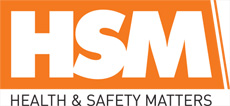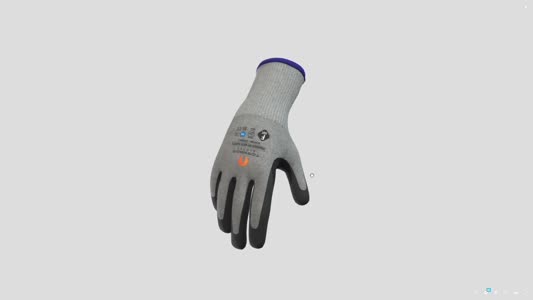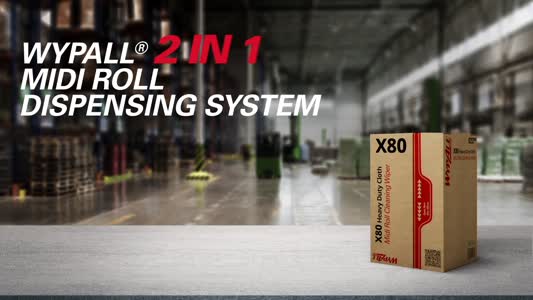
 |
Mark Sennett
Managing Editor |
 |
Kelly Rose
Editor |
| Home> | Health & Wellbeing | >General Health & Wellbeing | >Be prepared for cardiac events |
| Home> | Premises | >Risk Management | >Be prepared for cardiac events |
Be prepared for cardiac events
17 August 2025
CARDIAC PREPAREDNESS should be part of every workplace safety strategy. Defibspace provides an insight.

Sudden cardiac arrest (SCA) is a medical emergency in which the heart suddenly stops beating effectively. It differs from a heart attack, which is caused by a blockage in blood flow. SCA can lead to death within minutes without immediate action.
For employers, cardiac preparedness is becoming a vital component of workplace risk management and wellbeing planning. Each year in the UK, around 30,000 people experience an out-of-hospital cardiac arrest. An estimated 15% take place in public or workplace settings, which adds up to around 4,500 events annually.
Access to automated external defibrillators (AEDs) in the workplace remains inconsistent, despite these stats. Early use of an AED, combined with effective cardiopulmonary resuscitation (CPR), significantly increases survival chances. However, many UK workplaces still operate without a defibrillator on site, leaving gaps in their emergency preparedness strategies.
Cardiac preparedness refers to the integration of:
- CPR training
- AED availability
- emergency protocols
These need to be added into an organisation’s overall health and safety planning. It forms an extension of existing duty-of-care policies. It also signals a commitment to creating a safe, responsive and health-literate work environment.
Legal and duty‐of‐care considerations
There is currently no specific legal requirement in the UK for workplaces to have a defibrillator on site. However, several pieces of health and safety legislation make it clear that employers have a duty to assess and manage risks and this increasingly includes consideration of cardiac events.
First aid regulations
Under the Health and Safety (First-Aid) Regulations 1981, all employers must ensure that employees receive immediate attention if they are injured or taken ill at work. This includes conducting a first aid needs assessment based on the nature of the work, workforce demographics, and associated health risks.
While defibrillators are not mandated, the Health and Safety Executive (HSE) encourages employers to consider AEDs as part of their assessment, particularly in higher-risk or large-scale environments.
Duty of care
Employers also have broader responsibilities under the Management of Health and Safety at Work Regulations 1999. These require suitable measures to mitigate foreseeable health risks and sudden cardiac arrest is increasingly recognised as a plausible workplace emergency.
Industry bodies such as the British Standards Institution (BSI) and the Resuscitation Council UK support the inclusion of AEDs in public and occupational settings. As awareness grows, so does the expectation that employers will take proactive steps to support staff safety, particularly in high-footfall workplaces or where medical response times may be delayed.
Failing to address cardiac preparedness could expose employers to criticism or reputational harm, even if legal liability is unlikely.
Time, CPR and AED
Sudden cardiac arrest is a time-critical emergency. Survival rates fall sharply with each passing minute. This makes immediate intervention essential, well before emergency medical services (EMS) arrive on site.
First few minutes
According to the Resuscitation Council UK, for every minute that passes without CPR or defibrillation, a person’s chance of survival decreases by approximately 7-10%. After just 10 minutes without treatment, the likelihood of survival is extremely low.
However, if CPR is started immediately and an AED is used within 3-5 minutes, survival rates can reach up to 70% in some cases. These statistics are supported by findings across multiple studies and public health programmes.
Bystanders
While ambulance services in the UK aim to reach patients with life-threatening conditions within 8 minutes, this is not always achievable. This is especially true in large workplaces, remote locations, or during peak demand.
Having trained staff and an accessible defibrillator on site allows a bystander to intervene before EMS arrival. CPR maintains circulation, while the AED delivers a controlled electric shock to try to restore a normal heart rhythm. Many modern AEDs are fully automated and guide the user with visual and voice instructions.
This chain of survival, early recognition, early CPR, early defibrillation, and early advanced care is only effective if the first three links occur in the workplace.
Wellbeing culture and employer brand
For HR, Health & Safety, and Wellbeing teams, cardiac preparedness reinforces strategic goals around workforce health, psychological safety, and corporate responsibility.
Safety
Employers who invest in AEDs and cardiac training demonstrate a tangible commitment to employee welfare. This supports a positive safety culture, where staff feel that their wellbeing is prioritised not only in policy but in practice.
AED signage, staff awareness sessions, or inclusion in induction materials, help normalise cardiac preparedness as part of everyday workplace safety.
Wellbeing
The presence of a defibrillator can also reduce anxiety in employees who may be concerned about their health or that of colleagues, especially in higher-risk roles or among older staff. Including AED awareness in wellbeing communications helps build psychological readiness to act in an emergency.
Some organisations now incorporate defibrillator training within broader wellbeing programmes. This aligns physical health with mental preparedness and workplace resilience.
Employer brand
In competitive sectors, visible investment in staff health and emergency readiness can support employer branding. Clients, visitors, and potential hires may view AED provision as a signal of professional and ethical standards.
This reputational value aligns with Environmental, Social and Governance (ESG) goals, particularly the “social” dimension relating to occupational health and safety, although this is difficult to measure.
Practical implementation
Introducing cardiac preparedness into the workplace involves more than purchasing an AED. It also requires clear planning, integration into existing protocols, and ongoing management.
1. Cardiac Risk Assessment
Begin with a cardiac risk assessment tailored to your workplace. Factors to consider include:
- Workforce size and age profile
- Footfall from clients, visitors or the public
- Response time from local ambulance services
- Proximity to other AEDs (if any)
Larger or higher-risk workplaces may require more than one device, particularly across multiple floors or buildings.
2. Selecting the Right AED Key considerations when picking an AED:
- Ease of use: Most modern AEDs offer voice prompts and visual indicators.
- Fully vs semi-automatic: Fully automatic models deliver the shock without manual
- confirmation.
- Battery life and pad replacement: Maintenance schedules vary by model.
- Child mode or pads: Necessary in workplaces with children (e.g. schools or retail).
Consulting manufacturers or medical suppliers can help match the device to your workplace context.
3. Accessibility and Placement Defibrillators must be:
- Clearly signposted
- Accessible within 2-3 minutes’ brisk walking distance
- Not locked behind restricted-access doors (unless all staff can access them)
- Stored at a consistent indoor temperature unless designed for outdoor use
Consider using a wall-mounted cabinet with visual signage. Outdoor models require heated, weatherproof cabinets.
4. Training and Familiarisation
AEDs are designed for use by untrained bystanders, providing basic training builds confidence and reduces hesitation.
The Resuscitation Council UK and HSE recommend integrating AED awareness into workplace first aid training. Many providers now include this by default.
5. Maintenance and Registration
Every AED requires routine checks, even if rarely used. Appoint a responsible person to monitor:
- Battery expiry dates
- Pad expiry dates (usually every 2-5 years)
- Device status indicators (most have self-tests)
- Visibility and cleanliness of the cabinet
Register your AED with The Circuit (the national defibrillator network), so emergency services can direct bystanders to it when needed: www.thecircuit.uk
Cardiac preparedness in wellbeing and safety strategy
Cardiac preparedness should not be treated as a standalone initiative. It must be embedded within the organisation’s broader health, wellbeing and safety culture.
Integrating into wellbeing frameworks
HR and wellbeing teams can align defibrillator provision with existing health initiatives, such as:
- Employee health screening or occupational health
- Mental health awareness campaigns
- Workplace resilience and stress management
- Chronic illness support, including for cardiovascular conditions
This positioning shifts AEDs from a reactive safety measure to part of proactive health promotion and reinforces the message that the organisation takes all aspects of wellbeing seriously.
Adding to safety systems
AED provision should also feature in:
- First aid risk assessments
- Emergency action plans (including cardiac arrest response flowcharts)
- Induction training and refresher briefings
- Fire marshal and first aid coordinator duties
Some organisations include cardiac drills in their emergency testing calendar, especially in larger or higher-risk premises.
Encouraging participation
Awareness campaigns, short lunch-and-learn sessions, or internal communications can increase staff understanding and engagement. Some employers share anonymised stories of successful AED use or run demonstrations during wellbeing weeks.
Normalising the presence and use of defibrillators encourages faster action in an emergency and reduces fear of using the device.
Summary & what to do next
Cardiac preparedness is a practical, evidence-backed enhancement to any workplace safety and wellbeing strategy. For HR, Health & Safety, and Wellbeing teams, it offers a way to strengthen risk management, staff confidence, and organisational reputation.
Key points to consider:
- Sudden cardiac arrest is a leading cause of death in the UK and can happen without warning, including in workplace settings.
- Early CPR and AED use within the first 3-5 minutes can increase survival rates by up to 70%.
- Employers have a duty to assess health risks and are increasingly expected to consider AEDs as part of first aid planning.
- AED provision supports wellbeing, showing a commitment to both physical safety and psychological readiness.
- Integration is key. AEDs should be included in emergency procedures, safety culture, and health promotion.
Next Steps for Implementation
- Conduct a cardiac risk assessment tailored to your site and workforce.
- Select an appropriate AED model and ensure accessible placement.
- Provide training or awareness sessions for first aiders and key staff.
- Register your AED with The Circuit (www.thecircuit.uk).
- Incorporate cardiac preparedness into health, wellbeing, and safety policies.
This approach helps organisations meet emerging expectations, support their workforce more holistically, and prepare effectively for emergencies.
For more information, visit www.defibspace.com
Sources below is a list of sources used in this article.
Resuscitation Council UK - AED Use and Guidance https://www.resus.org.uk/sites/default/files/2020-03/AED_Guide_2019-12-04.pdf
Authoritative national guidance on AED deployment and use. Provides standards for training, placement, and emergency integration.
The Circuit - National Defibrillator Network (British Heart Foundation) https://www.thecircuit.uk
Official registration platform for AEDs in the UK, linked with ambulance services to support rapid emergency response.
Health and Safety Executive (HSE) - First Aid at Work Regulationshttps://www.hse.gov.uk/firstaid/legislation.htm
Outlines employer responsibilities under the 1981 First Aid Regulations. Encourages inclusion of AEDs based on risk assessment.
St John Ambulance - Workplace AED Provision https://www.sja.org.uk/course-information/blog/save-lives-protect-staff-your-guide-to-wor kplace-defibrillators
Covers common workplace AED queries and national survey data on adoption rates. Provides practical advice for HR and safety teams.
British Red Cross - AEDs and Staff Wellbeing https://www.redcrossfirstaidtraining.co.uk/first-aid-blogs/how-defibrillators-in-the-workpla ce-can-support-employee-wellbeing
Explains how AEDs contribute to psychological readiness and physical wellbeing in the workplace context.
Wolverson Medical - AED Importance in the Workplace https://www.wolverson.uk.com/the-importance-of-a-workplace-defibrillator
Supplier insight on AED implementation and industry trends. Useful for understanding practical considerations during procurement.
Skills Training Group - Legal Overview of AEDs in the UK https://www.skillstg.co.uk/blog/the-legal-requirements-for-defibrillators-uk-essential-guide lines-simplified
Explains the current legal landscape and clarifies common misunderstandings about AED obligations.
Steroplast Healthcare - AED Placement and Maintenance https://www.steroplast.co.uk/knowledge-base/workplace-defibrillator-everything-you-nee d-to-know.html
Detailed guidance on AED maintenance, cabinet types, and placement strategies.
CESafety - AED Training and Operational Integration https://cesafety.co.uk/news/complete-guide-aed-defibrillators-training-use-operation
Useful for HR and H&S managers seeking to incorporate AEDs into broader safety programmes.
Gov.uk - AED Guidance for Educational Settings (General Principles Apply) https://assets.publishing.service.gov.uk/media/67936b102de28ea2d392f35b/Automated_ External_Defibrillators__AEDs__guidance_for_schools.pdf
Though school-focused, this document provides transferable best practice on accessibility, training, and cultural embedding of AEDs.
- Disposable coveralls
- Road deaths rise a wake-up call for businesses
- Get behind No Falls Week
- The differences between low and high concentrations of H2S gas
- Technology transforms safety
- From the CEO’s Desk: HSE addresses the influence of 'human error'
- Six steps to improve mental well-being in the workplace
- Achieve a culture of competence
- Data shows decline of workplace injuries while mental health rises
- The holy grail of construction
- BSIF: Covid-19 Update
- Dust tight
- SAFEContractor for 5th year
- BSC welcomes proposals to slash legal costs in personal injury claims
- Get some insight
- Asbestos remains number one killer
- Chemical exposure course goes more than skin deep
- Getting workers involved in safety
- Dual drug testing
- On-site health screening























